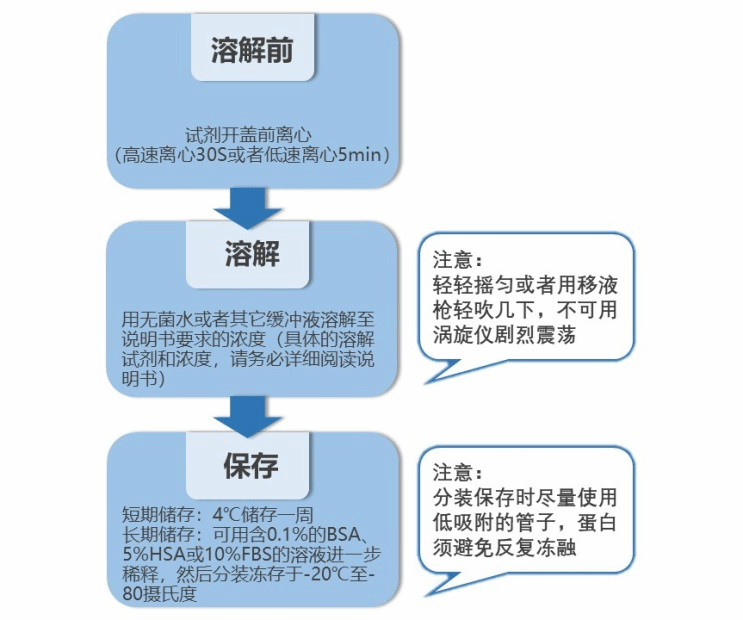
|

| 产地 | 中国 |
| 品牌 | PrimeGene(普欣) |
| 货号 | 101-15 |
| 用途 | 细胞/科研/抗肿瘤药物 |
| 包装规格 | 2μg |
| 纯度 | > 97 %% |
| CAS编号 | |
| 是否进口 | 否 |
产品名称:Recombinant Human Interleukin-15(rHuIL-15)
产品价格:
| 货号 | 规格 | 价格 |
| 101-15 | 2μg | 600 |
| 101-15 | 10μg | 1500 |
| 101-15 | 100μg | 7170 |
| 101-15 | 250μg | 12900 |
| 101-15 | 500μg | 16770 |
| 101-15 | 1mg | 22930 |
产品介绍:
| Accession | P40933 |
| GeneID | 3600 |
| Source | Escherichia coli. |
| Molecular Weight | Approximately 12.9 kDa, a single non-glycosylated polypeptide chain containing 114 amino acids. |
| Quantity | 2μg/10μg/1000μg |
| AA Sequence | NWVNVISDLK KIEDLIQSMH IDATLYTESD VHPSCKVTAM KCFLLELQVI SLESGDASIH DTVENLIILA NNSLSSNGNV TESGCKECEE LEEKNIKEFL QSFVHIVQMF INTS |
| Purity | > 97 % by SDS-PAGE and HPLC analyses. |
| Biological Activity | Fully biologically active when compared to standard. The ED50 as determined by a cell proliferation assay using murine CTLL-2 cells is less than 0.5 ng/ml, corresponding to a specific activity of > 2.0 × 106 IU/mg. |
| Physical Appearance | Sterile Filtered White lyophilized (freeze-dried) powder. |
| Formulation | Lyophilized from a 0.2 μm filtered concentrated solution in PBS, pH 7.4. |
| Endotoxin | Less than 1 EU/μg of rHuIL-15 as determined by LAL method. |
| Reconstitution | We recommend that this vial be briefly centrifuged prior to opening to bring the contents to the bottom. Reconstitute in sterile distilled water or aqueous buffer containing 0.1 % BSA to a concentration of 0.1-1.0 mg/mL. Stock solutions should be apportioned into working aliquots and stored at ≤ -20 °C. Further dilutions should be made in appropriate buffered solutions. |
| Stability & Storage | Use a manual defrost freezer and avoid repeated freeze-thaw cycles. - 12 months from date of receipt, -20 to -70 °C as supplied. - 1 month, 2 to 8 °C under sterile conditions after reconstitution. - 3 months, -20 to -70 °C under sterile conditions after reconstitution. |
| Usage | This material is offered by Shanghai PrimeGene Bio-Tech for research, laboratory or further evaluation purposes. NOT FOR HUMAN USE. |
| SDS-PAGE |  |
| Reference | 1. Anderson DM, Johnson L, Glaccum MB, et al. 1995. Genomics, 25: 701-6. 2. Krause H, Jandrig B, Wernicke C, et al. 1996. Cytokine, 8: 667-74. 3. Chirifu M, Hayashi C, Nakamura T, et al. 2007. Nat Immunol, 8: 1001-7. 4. Grabstein KH, Eisenman J, Shanebeck K, et al. 1994. Science, 264: 965-8. 5. Giri JG, Ahdieh M, Eisenman J, et al. 1994. EMBO J, 13: 2822-30. 6. Arena A, Merendino RA, Bonina L, et al. 2000. New Microbiol, 23: 105-12. |
| Background | Human Interleukin-15 (IL-15) is expressed by the IL15 gene located on the chromosome 4. It shares approximately 97 % and 73 % sequence identity with simian and murine IL-15, respectively. Both human and simian IL-15 are active on murine cells. IL-15 is secreted by mononuclear phagocytes (and some other cells), especially macrophages following infection by virus. It possesses a variety of biological functions, including stimulating and maintaining of cellular immune responses, especially regulating T and natural killer (NK) cell activation and proliferation. In additionally, it shares many biological properties with IL-2, including T, B and NK cell-stimulatory activities. IL-15 signals through a complex composed of IL-2/IL-15 receptor beta chain. Although IL-15 lacks sequence homology with IL-2, it has recently been shown that both the beta and gamma chains of the IL-2 receptor are utilized for IL-15 binding and signaling. In addition, an IL-15 specific binding protein has also been cloned from a mouse T cell clone. |
★高纯度、高蛋白活性
★低内毒素
★不同批次 产品稳定
★国内现货、高效快速
★Bio-Techne旗下品牌,品质保障
★无缝替代进口蛋白,质优价廉。
